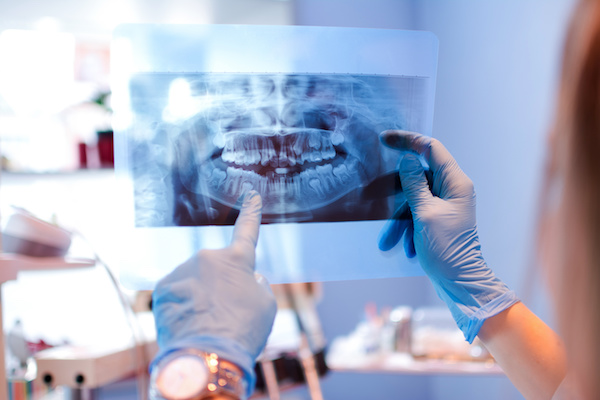
The Evolution of Dental X-Rays
It is hard to imagine, but the quick, easy dental x-rays that are performed in just a matter of seconds as part of your routine dental checkup weren’t always around. In fact, there was a time when dental x-rays were rarely performed at all.
Curious just how much dental x-rays have changed over the years? This brief overview of the evolution of dental x-rays will give you a general idea of how this now regularly performed dental procedure has changed since it was first invented in 1895.
The Discovery of the X-Ray
To understand just how much dental x-rays have changed you have to go back and learn about the very first x-rays. The very first x-rays, used in either the medical or dental industry, date back to 1895. A physicist named Wilhelm Rontgen was the individual responsible for discovering them.
Wilhelm Rontgen discovered that when a very specific type of crystal was placed near a tube in his lab, a vibrant glow was produced. That glow cast a green color that seemed to ‘go through’ certain things, yet not others. After a few experimentations, Wilhelm Rontgen discovered that the glow that was cast could go through tissue, but for some reason was blocked out by harder substances such as teeth and bones. The substances blocked the glow so much that it created a shadow that could then be captured on paper.
These first x-rays weren’t easy to take. There was an entire lengthy process involved with setting up the crystals, blocking the tube with dark colored paper, and capturing the shadows onto a paper so the images could be used.
The First Dental X-Rays
Even though Wilhelm Rontgen was the first to discover x-rays, he wasn’t the first to use them in the dental office. That honor goes to C. Edmund Kells. C. Edmund Kells took the first dental x-ray in his New Orleans dental office. Kells was extremely receptive to advances in technology and actually lead the way for other dentists to start using x-rays in their practices.
The Rapid Evolution of the Dental X-Ray
Those first dental x-rays were uncomfortable and required you to sit still for long periods of time. Over the next 100 years, technology changed to help make dental x-rays easier to take and more comfortable for patients. Some of those changes included using faster film, discovering how to capture images with more detail, and improving the entire process so patients were more comfortable. Today, dentists rely upon digital technology to take quick, painless x-rays.
When Did X-Rays Become a Part of Routine Dental Checkups?
It is surprising to many people to discover that it wasn’t until the late 1950s that x-rays were starting to be used regularly in dentist offices. Before that time, they were only used for extreme situations.
Even in the late 1950s, dentists were still reluctant to use x-rays. The process was costly and dentists felt that they could just as easily diagnosis problems without x-rays. Over time and with advancements in technology, dentists started to accept x-rays and incorporated them into their daily practice. Now, dental x-rays are considered a regular part of every dental checkup.
How Do Today’s Dental X-Rays Help Dentists?
Today’s digital dental x-rays help dentists by providing them with detailed images that can be used to diagnose everything from cavities and infections to tumors and gum disease. These x-rays can be used to spot many dental problems before they become extremely problematic.
Dental x-rays can also be used by dentists to monitor the growth or movement of teeth, determine the extent of damage after an injury or accident, and notice any changes that may have occurred to the structure or shape of the mouth, jaw, or teeth.
Want to learn more about how dentists use dental x-rays? Feel free to ask your dentist next time you visit them. He or she will be willing to explain how they use dental x-rays to do everything from looking for potential tooth decay, gum disease, and cavities to determining if you are experiencing any underlying health problems, such as cancers or infections.

